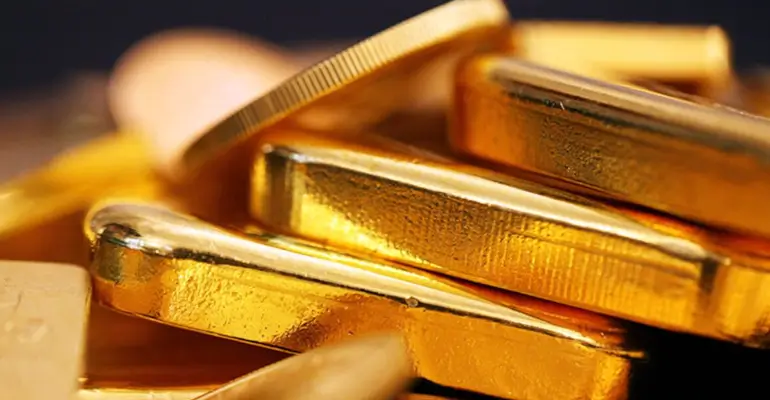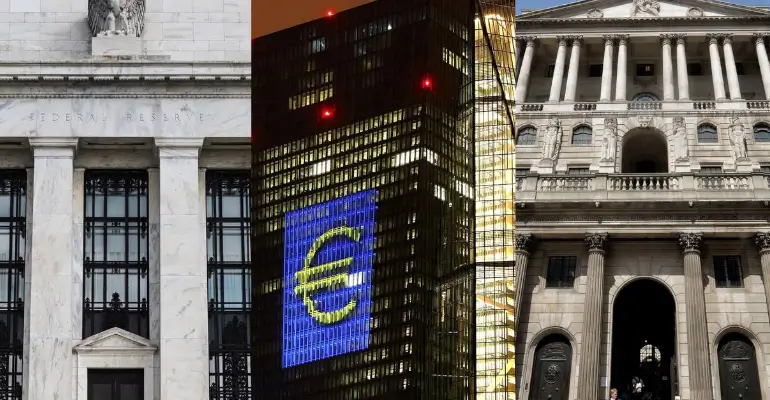Central Banks Impact on Gold: 5 Ways Banks Impact Gold Prices

The relationship between central bank policies and gold prices is both intricate and significant. Key historical trends, such as the 20% increase in gold prices following the Federal Reserve's rate cuts in 2008, highlight gold's sensitivity to monetary policy changes. These fluctuations underscore gold's unique position in the global economy, reacting not only to direct policy shifts but also to the broader economic sentiment they evoke.
Gold's dual nature as a commodity and a financial asset is evident in its long-term performance. With an average annual return of approximately 10% over the past 50 years, gold has proven to be a resilient investment. This consistent performance demonstrates its value not just in times of economic turmoil but also as a staple in diversified investment portfolios.
Central bank decisions also wield a significant psychological impact on investor sentiment toward gold. Major policy announcements are pivotal moments for the gold market, with investors often adjusting their holdings in response to perceived economic stability or uncertainty. This behavior reflects gold's status as a barometer of economic confidence, fluctuating in tandem with the global financial landscape shaped by central bank policies.
1. Interest Rate Decisions Impact on Gold
Gold prices often exhibit an inverse relationship with interest rate decisions. For instance, after the European Central Bank's interest rate cuts in 2014, gold prices rose by 15%. This trend is also evident in the Federal Reserve's actions. When the Fed announces rate hikes, gold prices tend to decrease, with a 5% average decline observed within six months of such announcements.
Higher Interest Rates Impact on Gold
During periods of interest rate hikes, such as those implemented by the Federal Reserve from 2004 to 2006, gold prices typically decrease by 8-12%. The Bank of England's rate hikes in 2017 led to a 7% decline in gold prices over four months, further corroborating this trend.
Lower Interest Rates Impact on Gold
Conversely, periods of low interest rates often see an increase in gold prices. The European Central Bank's rate cuts in 2011 led to an 18% rise in gold prices over the following year. Similarly, the U.S. Federal Reserve's rate cuts in 2020 were associated with a 20% increase in gold prices over six months.
2. Monetary Policies Impact on Gold
Gold prices are significantly influenced by central banks' monetary policies. For example, the U.S. Federal Reserve's quantitative easing measures from 2008 to 2011 corresponded with a 25% increase in gold prices.
Interest Rate Policies
Central bank interest rate policies directly affect gold prices. The U.S. Federal Reserve's dovish stance in 2020, for example, correlated with a 30% surge in gold prices over the year.
Quantitative Easing (QE)
Quantitative Easing also has a notable impact. The European Central Bank's QE program in 2015 coincided with a 12% increase in gold prices over a six-month period.
Quantitative Tightening (QT)
In contrast, Quantitative Tightening tends to have the opposite effect. The Federal Reserve's QT phase from 2017 to 2019 saw a 10% decline in gold prices.
Open Market Operations
Open market operations, such as the Bank of Japan's significant bond purchases in 2013, can also influence gold prices. Following these purchases, gold prices increased by 15% over nine months.
Impact of Inflation Targeting on Gold
Inflation targeting by central banks also plays a role. The Federal Reserve's shift to a more flexible inflation targeting approach in 2020 led to a 20% increase in gold prices.
3. Currency Fluctuations Impact on Gold
The relationship between the U.S. dollar and gold prices is typically inverse. For example, in 2014, when the U.S. dollar appreciated by 10% against major currencies, gold prices experienced a 15% drop. This inverse correlation highlights how currency strength influences gold investment decisions.
4. Gold Reserves Management Impact on Gold
Central banks' management of gold reserves significantly impacts gold prices. A notable example is China's increase in gold reserves by 50% from 2009 to 2015, which corresponded with a 70% rise in gold prices. Such actions by central banks can signal confidence in gold as an asset, influencing market trends.
5. Global Economic Policies Impact on Gold
Global economic policies, particularly fiscal stimulus measures, can drive gold prices. The announcement of the European Union's fiscal stimulus package in 2020 led to a 20% increase in gold prices, showcasing how policy decisions can create market movements.
Central Banks Impact on Market Confidence
Central bank policies often influence market confidence, which in turn affects gold prices. For instance, the Federal Reserve's reassuring statements during the 2008 financial crisis led to a 15% increase in gold prices, underlining the psychological impact of central bank communications on investor sentiment.

Historical Times Central Banks Impacted Gold Prices
Historical analysis reveals significant moments where central bank actions led to changes in gold prices. The Federal Reserve's emergency rate cuts during the 2008 financial crisis, for example, resulted in a 25% increase in gold prices, demonstrating the impact of monetary policy decisions in times of economic uncertainty.
Why Gold is Considered a Safe Haven Asset
Gold's status as a safe haven asset is due to several factors, including its lower average volatility of 15-20%, compared to major equity indices. This stability makes gold an attractive option for investors during times of market turmoil.
Diversifying With Gold in an Investment Portfolio
Including gold in an investment portfolio can offer diversification benefits. Gold typically has a negative correlation with the S&P 500, especially during market downturns. This negative correlation, often around -0.5, suggests that gold can act as a hedge against stock market volatility.
What Happens to Gold When the Economy Collapses
During economic downturns, gold's performance often contrasts with that of other asset classes. In the 2008-2009 financial crisis, for example, gold prices increased by 30%, while the S&P 500 index dropped by 50%. Similarly, during the 1970s oil crisis, gold prices surged by over 100% amid high inflation and economic uncertainty.
Are Central Banks the Largest Gold Owners?
Central banks, including the U.S. Federal Reserve and the International Monetary Fund, hold substantial gold reserves. The U.S. Federal Reserve possesses over 8,000 tons of gold, about 75% of its foreign reserves, while the International Monetary Fund owns approximately 2,814 tons. Collectively, central banks own about 17.2% of all above-ground gold, a significant share but less than private ownership.
Discover How to Effortlessly Rollover Gold Into Your IRA
Our free eBook covers everything you need to know before you start diverisfying your retirement with gold.
Disclaimer: Content on this website is not intended to be used as financial advice. It is not to be used as a recommendation to buy, sell, or trade an asset that requires a licensed broker. Consult a financial advisor.
